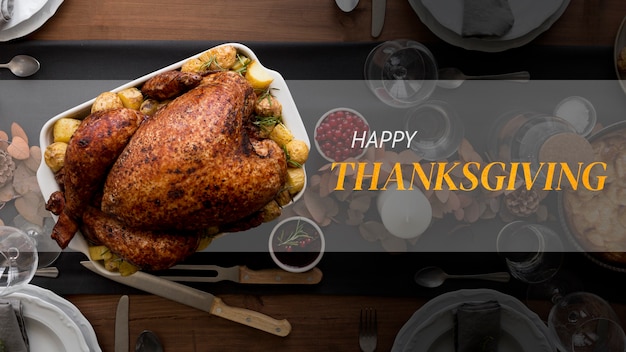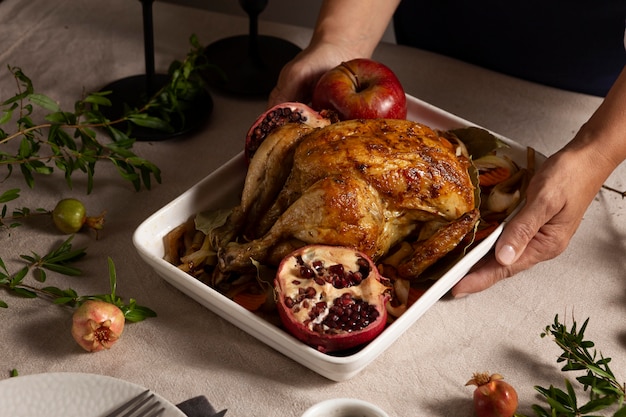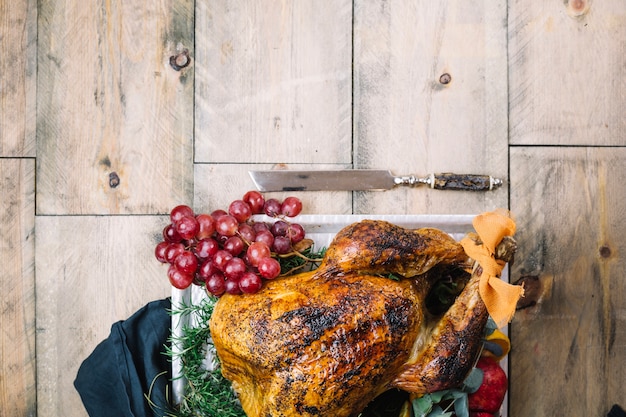(Part 1) Choosing the Right Turkey

Size Matters, My Friend
For a 20lb turkey, you're aiming for a plump bird, a balanced blend of succulent breast and flavorful leg meat. Think of it as finding the sweet spot between a marathon runner and a weightlifter – the perfect combination of lean and hearty. Remember, a 20lb turkey will typically feed a crowd of 10-12 people, so if you're expecting a larger gathering, you might want to consider going up a size.Fresh or Frozen? That is the Question
This is a personal choice, like deciding whether you prefer your eggs scrambled or poached. Fresh turkeys, often found at specialty butcher shops, are known for a slightly richer flavour, but require more planning as they need to be cooked within a few days. frozen turkeys are incredibly versatile, offering the convenience of buying them in advance. Just make sure you allow plenty of time for proper thawing in the fridge before cooking – a good rule of thumb is 24 hours for every 5lbs of turkey.The "Look" Test: Beyond the Packaging
Don't just grab the first turkey you see! Inspect the bird thoroughly, like a seasoned detective on a case. Look for any discoloration or unusual smells. The skin should have a healthy, consistent color, and the packaging should be intact without any leaking. If anything seems off, trust your instincts and pick another bird.Brand Matters? Not Really
While you might see turkeys boasting "free-range" labels or touting special breeds, the truth is, your turkey's flavor is heavily influenced by how you cook it! Choose a turkey that you trust, fits your budget, and makes you feel good about putting it on your table.(Part 2) Preparing Your Turkey: The Pre-Roast Ritual

1. Defrosting (If Necessary): Patience is Key
If you've opted for a frozen turkey, proper defrosting is a must. Remember, patience is a virtue, especially when dealing with a 20lb bird. The safest and most reliable method is to defrost in the refrigerator. This takes time – approximately 24 hours for every 5lbs of turkey. That means a 20lb turkey will need around 4 full days to defrost completely.Here's a table to help you plan your defrosting schedule:
| turkey weight (lbs) | Defrosting Time in Fridge (hours) |
|---|---|
| 5 | 24 |
| 10 | 48 |
| 15 | 72 |
| 20 | 96 |
Important Note: Never defrost a turkey at room temperature. This can lead to bacteria growth and make your turkey a culinary disaster. And once it's thawed, keep it refrigerated until you're ready to cook.
2. Pat It Dry: A Little Touch of TLC
Once the turkey is fully defrosted, pat it dry with paper towels. Think of it as giving your bird a spa treatment – it helps to remove any excess moisture and allows the skin to crisp up beautifully in the oven.3. Brine It! (Optional): Unlocking Flavor and Tenderness
Now, here's a bit of a culinary debate: to brine or not to brine? Some folks believe it's a crucial step, while others swear by traditional roasting. Brining involves soaking the turkey in a saltwater solution for several hours before cooking. This process helps to tenderize the meat, lock in moisture, and give your turkey a deeper, richer flavor. Personally, I'm a big believer in brining. It makes the turkey incredibly juicy and flavorful, especially when you're working with a large bird like a 20lb turkey. It takes some planning, but the extra effort is worth it.If you're feeling adventurous, try this simple brine recipe:- 8 cups of water
- 1 cup kosher salt
- 1/2 cup sugar
- 1 tablespoon dried thyme
- 1 tablespoon dried rosemary
4. Stuff It (Optional): A Flavorful Encore
Stuffing can add a delicious dimension to your turkey, but it's not essential. If you choose to stuff your turkey, make sure you do it right. Never stuff the turkey the night before; this can lead to bacteria growth and make your meal a risk instead of a delight. Stuff the turkey just before roasting and ensure the stuffing reaches an internal temperature of 165°F (74°C) for safety.If you're unsure about stuffing, consider making it separately in a casserole dish and serving it alongside the turkey.5. Getting Ready for the Oven: A Final Touch of Glamour
This is the moment your turkey becomes a star! Place the turkey in a large roasting pan and pat it dry again. Tying the turkey's legs together with kitchen twine helps to prevent it from splaying out during cooking. Tuck the wings behind the back of the bird to keep them from burning.Now, for the grand finale: buttering up! Rub the entire turkey generously with butter or olive oil, and season liberally with salt and pepper. This creates a beautiful golden crust and enhances the turkey's flavor.(Part 3) The Great Turkey Cook-Off: Roasting to Perfection

1. Preheating the Oven: Setting the Stage for Success
Always preheat your oven to 325°F (163°C). This ensures that the turkey cooks evenly and prevents it from drying out.2. The "Time" Factor: A Calculated Approach
Now, the big question – how long does it take to cook a 20lb turkey? The general rule of thumb is 15 minutes per pound at 325°F. For a 20lb turkey, that translates to about 300 minutes or 5 hours. But this is just a starting point.Other factors can affect the cooking time:- Oven Variations: Every oven is a little different. You may need to adjust the cooking time slightly based on your oven's quirks.
- Stuffing: If you're stuffing the turkey, it will take longer to cook. Add an extra 30-45 minutes to your cooking time.
- Boneless Turkey: A boneless turkey will cook much faster than a bone-in turkey. Check the cooking time instructions on the package for specific guidelines.
3. Checking the Temperature: The Gold Standard of Doneness
The best way to know if your turkey is cooked through is to check the internal temperature using a meat thermometer. Insert the thermometer into the thickest part of the thigh, avoiding the bone. The turkey is fully cooked when the internal temperature reaches 165°F (74°C).4. Resting Time: Letting the Turkey Unwind
Once the turkey is cooked, it's crucial to let it rest for at least 30 minutes before carving. This allows the juices to redistribute throughout the meat, resulting in a much more tender and flavorful turkey.5. Tips for a perfect roast: Elevating Your Turkey Game
Here are some tips to help you achieve a truly spectacular roast:- Basting: Basting the turkey during cooking with pan juices helps to keep the skin moist and prevents it from drying out. You can baste every 30-45 minutes.
- Foil Cover: Cover the turkey with foil for the first half of the cooking time. This helps to prevent the skin from over-browning and keeps the turkey moist. Remove the foil for the last hour of cooking to allow the skin to crisp up.
- High Heat for crispy skin: For the last 30 minutes of cooking, increase the oven temperature to 400°F (204°C). This will help to create a beautifully crispy skin.
- Meat Thermometer: As mentioned earlier, a meat thermometer is your best friend! Always check the turkey's internal temperature to ensure it's fully cooked.
(Part 4) Turkey Troubleshooting: Saving the Day
We've all had those moments – something goes awry, and your turkey isn't turning out quite as planned. But don't despair! Here are some common turkey cooking problems and how to fix them:1. The Turkey is Burning: A Case of Over-Browning
If the turkey skin is starting to burn before the meat is cooked through, simply lower the oven temperature by 25°F (14°C) and cover the turkey with foil. Keep an eye on the turkey and make sure it doesn't get too dry.2. The Turkey is Dry: Restoring Moisture
This is a common problem, especially with larger turkeys. If your turkey is dry, try adding more moisture during cooking. Baste the turkey more frequently with pan juices or even add a cup of broth to the roasting pan.3. The Breast is Overcooked: A Rescue Mission
If the turkey breast is overcooked while the rest of the turkey is still undercooked, it's best to cook the breast separately. Remove the turkey from the oven, carefully remove the breast, and place it on a baking sheet. Wrap the breast in foil and return it to the oven for a shorter amount of time.4. The Turkey is Not Cooking Evenly: Rotating for Perfection
If the turkey isn't cooking evenly, it's likely because of an uneven heat distribution in the oven. Try rotating the turkey halfway through cooking to ensure it cooks evenly on all sides.(Part 5) Carving the Turkey: A Culinary Triumph
The big moment has arrived! Your turkey is cooked to perfection, and it's time to carve it up. Don't worry, this isn't a culinary stunt show; it's actually quite straightforward with a bit of practice.1. Let it Rest: Patience Pays Off Again
Remember that important resting time we talked about? Don't skip this step! Let the turkey rest for at least 30 minutes before carving. This will allow the juices to settle and make it much easier to carve, giving you beautifully tender slices.2. Gather Your Tools: The Carving Kit
You'll need a sharp carving knife, a cutting board (large enough for your turkey!), and a few serving platters or bowls. For added safety and control, use a carving fork to hold the turkey while you're carving.3. Start at the Breast: The Golden Slice
Begin by carving the breast meat. Use your carving knife to cut along the bone of the breast, separating the breast meat from the bone. Then, slice the breast meat into thin, even slices.4. Carve the Legs and Thighs: Unleashing the Flavor
Next, carve the legs and thighs. Carefully cut the legs and thighs away from the body. Then, use your carving knife to separate the drumsticks from the thighs. You can remove the skin from the legs and thighs if you prefer, but it's usually quite flavorful and tender.5. Carving the Wings: A Simple Finish
Finally, carve the wings. Simply cut the wings away from the body. You can either serve the wings whole or cut them into smaller pieces.6. Present Your Masterpiece: A Table Ready for Celebration
Arrange the carved turkey meat on serving platters or bowls. Add any delicious gravy, cranberry sauce, or stuffing to the side. Congratulations! You've successfully carved a magnificent turkey, a testament to your culinary skills.(Part 6) Leftovers: Turkey Delight Reimagined
Leftovers? Don't even think about throwing them away! Leftover turkey is a culinary treasure, offering a world of delicious possibilities.1. turkey sandwiches: A Classic for a Reason
A timeless favorite! Slice up some leftover turkey and pile it high on toasted bread with your favorite condiments. Add lettuce, tomato, cheese, or any other ingredients that tickle your fancy.2. turkey soup: A Cozy Comfort
This is a fantastic way to use up leftover turkey, especially on a chilly day. Simply simmer the turkey with vegetables, broth, and spices to create a hearty and flavorful soup.3. turkey salad: Versatile and Delightful
Turkey salad is a versatile dish that can be served in sandwiches, wraps, or even on a bed of lettuce. Combine leftover turkey with mayonnaise, celery, onion, and your favorite seasonings.4. turkey pot pie: A Flaky Feast
This is a more substantial dish that will satisfy your cravings for comfort food. Combine leftover turkey with vegetables, gravy, and a flaky crust for a delicious pot pie.5. Turkey Shepherd's Pie: A Twist on a Classic
This is a twist on the classic shepherd's pie, using leftover turkey instead of beef. Simply layer leftover turkey with mashed potatoes and gravy for a satisfying meal.(Part 7) Beyond the Turkey: side dishes to Remember
We've conquered the turkey, but let's not forget the side dishes! A complete Thanksgiving or Christmas dinner deserves a delicious spread of accompaniments.1. Stuffing: A Flavourful Companion
Whether you're stuffing your turkey or making it separately, stuffing is a must-have. There are countless stuffing recipes out there, but my personal favourite includes bread cubes, sausage, celery, onion, and herbs.2. Mashed Potatoes: Creamy Comfort
Mashed potatoes are a classic side dish for a reason. They're creamy, comforting, and go perfectly with roast turkey. I like to add a little butter, milk, and sour cream to my mashed potatoes for extra flavor and richness.3. Gravy: The Finishing Touch
Gravy is the ultimate finishing touch for a roast turkey. It's easy to make from the pan drippings, and it adds a delicious layer of flavor to the meal. Simply whisk together pan drippings, flour, and broth until smooth and thickened.4. Cranberry Sauce: A Festive Twist
Cranberry sauce is a festive and tangy side dish that complements the richness of the turkey. You can buy it ready-made or make your own from fresh cranberries, sugar, and a touch of orange zest.5. green bean casserole: A Classic Thanksgiving Delight
This is a classic Thanksgiving side dish that's both delicious and visually appealing. It's made with green beans, cream of mushroom soup, and crispy fried onions.6. sweet potatoes: A Festive Delight
sweet potatoes are another delicious and festive side dish. You can roast them, mash them, or even make a sweet potato casserole.(Part 8) FAQs: Addressing Your Turkey Questions
Here are some commonly asked questions about cooking a 20lb turkey:1. How long does it take to cook a 20lb turkey?
A 20lb turkey will take about 5 hours to cook at 325°F (163°C). However, the cooking time can vary depending on your oven and whether you're stuffing the turkey.
2. How do I know if my turkey is cooked through?
The best way to check if your turkey is cooked through is to use a meat thermometer. Insert the thermometer into the thickest part of the thigh, without touching any bone. The turkey is fully cooked when the internal temperature reaches 165°F (74°C).
3. What should I do if the turkey is burning?
If the turkey skin is starting to burn, lower the oven temperature by 25°F (14°C) and cover the turkey with foil. Keep an eye on the turkey and make sure it doesn't get too dry.
4. What's the best way to prevent the turkey from drying out?
Basting the turkey with pan juices during cooking helps to keep the skin moist and prevent it from drying out. You can also cover the turkey with foil for the first half of the cooking time.
5. What can I do with leftover turkey?
There are so many delicious things you can do with leftover turkey! You can make turkey sandwiches, turkey soup, turkey salad, turkey pot pie, turkey shepherd's pie, and much more!
There you have it, my friends! You're now equipped with everything you need to tackle that 20lb turkey and create a truly memorable feast. Remember, practice makes perfect, so don't be afraid to experiment and find what works best for you. Happy cooking!
Everyone is watching

Corn on the Cob: The Ultimate Guide to Perfectly Cooked Ears
Healthy MealsAh, corn on the cob. Just the name evokes images of sunny days, barbecues, and that sweet, juicy flavour that ...

Perfect Pork Roast Oven Cooking Time: A Guide to Delicious Results
Healthy MealsThere's something truly satisfying about a perfectly roasted pork. The aroma alone is enough to make your mout...

Ham Cooking Time: How Long to Bake, Smoke, or Boil a Delicious Ham
Healthy MealsAh, ham. It's a classic, isn't it? A real crowd-pleaser, especially around holidays. And when done right, it'...

Scallops: The Ultimate Guide to Perfect Cooking
Healthy MealsAh, scallops. Those delicate, sweet, and utterly delicious morsels of the sea. They hold a special place in my...

Spaghetti Squash: The Ultimate Guide to Cooking and Serving
Healthy MealsRemember that time you saw spaghetti squash at the supermarket, looking all bumpy and strange, and thought, "W...
